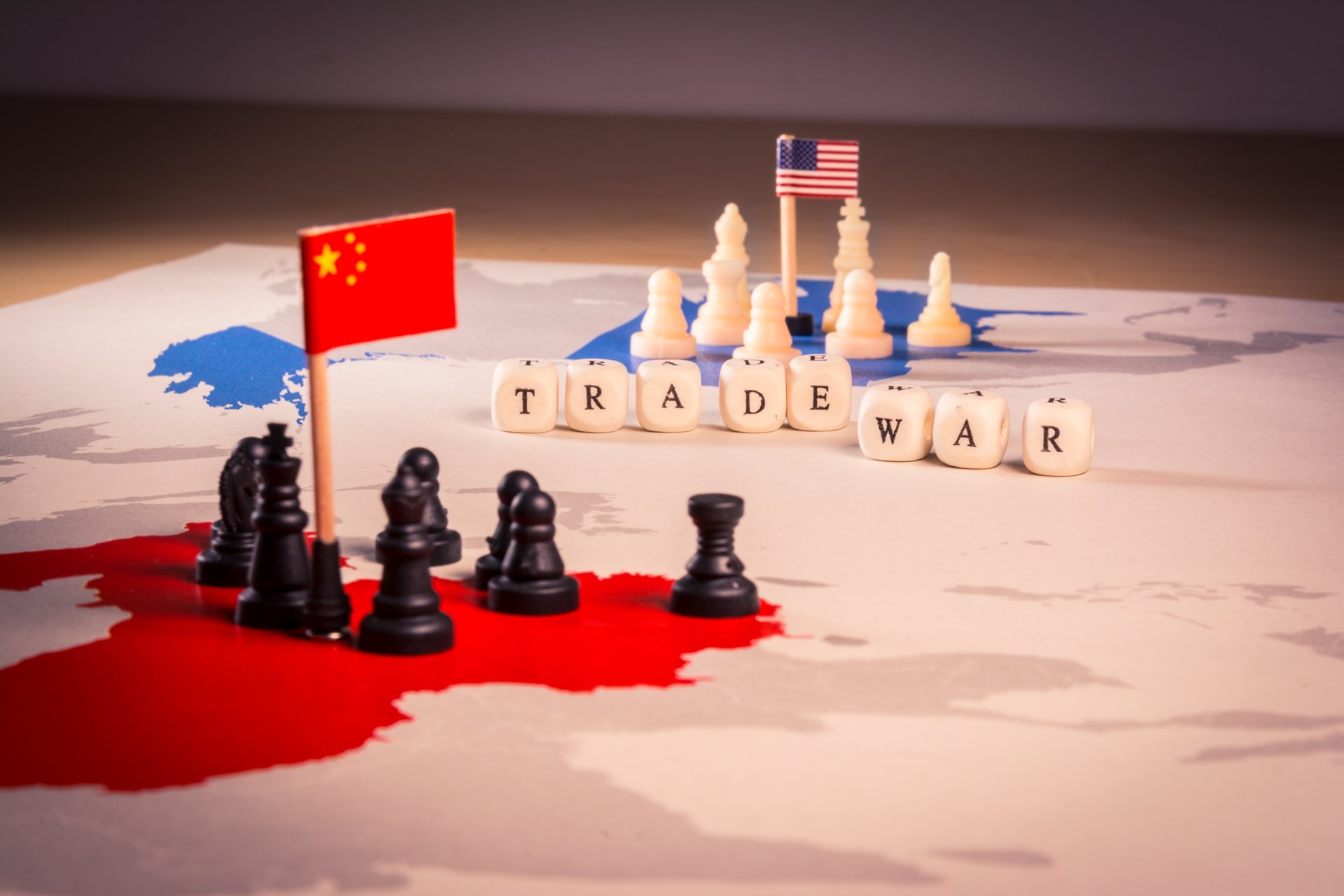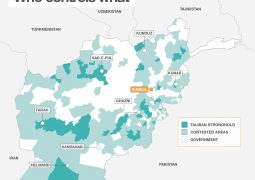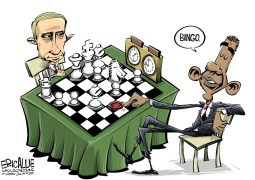Who pays Trump’s tariffs, China or U.S. customers and companies?

U.S. President Donald Trump says China pays the tariffs he has imposed on $250 billion (£199 billion) of Chinese exports to the United States.
But that is not how tariffs work. China’s government and companies in China do not pay U.S. tariffs directly. Tariffs are a tax on imports and are paid by U.S.-registered firms to U.S. customs when goods enter the United States.
Importers often pass the costs of tariffs on to customers – manufacturers and consumers in the United States – by raising their prices. U.S. business executives and economists say U.S. consumers foot much of the tariff bill.
White House economic adviser Larry Kudlow has said that both sides suffer with tariffs.
The tariff bill will rise further if Trump is unable to make progress on U.S. demands for reform in China when he meets with Chinese President Xi Jinping later this month. Trump has said he would impose tariffs on the remaining $300 billion of goods imported from China that are not yet subject to import taxes.
That includes products ranging from cellphones to baby pacifiers, and would mean almost all imports from China would be subject to a 25 percent import tax.
U.S. COMPANIES SEE RISING CONSUMER PRICES
A growing number of U.S. companies has warned about the negative impact of the tariffs on American consumers.
A wide range of companies this week have told government officials at hearings in Washington that they have few alternatives other than China for producing clothing, electronics and other consumer goods. They have said alternatives would cost more, and that the next round of tariffs could wipe out profits and cost jobs.
Nike Inc and 172 other footwear companies have urged Trump to remove footwear from a list of imports facing a proposed extra 25% tariff, warning the move could cost consumers an additional $7 billion a year.
Walmart Inc, the world’s largest retailer, and department store chain Macy’s Inc have warned that prices for shoppers will rise due to higher tariffs on goods from China.
WHAT THE ‘TARIFF MAN’ SAYS
Trump, who has called himself the “Tariff Man,” has often repeated that China pays for U.S. tariffs on its goods.
“We have billions of dollars coming into our Treasury — billions — from China. We never had 10 cents coming into our Treasury; now we have billions coming in,” he said on Jan. 24.
On May 5, he tweeted: “For 10 months, China has been paying Tariffs to the USA.”
As well as imposing tariffs on Chinese goods, Trump has also imposed a tax on global steel and aluminium imports and shipments of washing machines and solar panels.
Trump and top members of his Cabinet have said that the tariffs are accelerating a move of manufacturing out of China.
HOW TARIFFS REALLY WORK
U.S. Customs and Border Protection (CBP) collects the tax on imports. The agency typically requires importers to pay duties within 10 days of their shipments clearing customs.
Through May 1, Washington has assessed $23.7 billion in tariffs since early 2018, according to data from the CBP.
Total tariff revenue – including levies that predated Trump – shot up by 89% in the first half of the current fiscal year starting Oct. 1, to a total of $34.7 billion, according to U.S. Treasury data.
Every item imported into the United States legally has a customs code. Importers are expected to check the tariffs and other taxes and duties due on the goods they bring in, calculate what they owe, and pay it.
U.S. Customs reviews payments and sends importers a fresh bill if it detects underpayment.
Importers also have to post payment guarantees, or import bonds, with customs. The costs of these bonds have risen with tariffs, an additional burden on U.S.-based firms importing goods from China.
DO CHINESE SUPPLIERS BEAR THE COSTS OF U.S. TARIFFS?
Chinese suppliers do shoulder some of the cost of U.S. tariffs in indirect ways. Exporters sometimes, for instance, may offer U.S. importers a discount to help defray the costs of higher U.S. duties and maintain their contracts and market share.
Chinese companies might lose business if U.S. importers find cheaper, tariff-free sources of the same goods outside China.
And outside of tariffs, the Trump administration’s decision to add China’s Huawei, the world’s largest telecoms equipment maker, to a trade blacklist, has hit that company hard.
But U.S.-based importers are managing the higher tax burden in a number of ways that hurt U.S. companies and customers more than China.
Such strategies include accepting lower profit margins; cutting costs – including wages and jobs for U.S. workers; deferring any potential wage hikes, in addition to passing on tariff costs through higher prices for U.S. consumers or companies.
Most importers use a mix of such tactics to spread the higher costs among suppliers and consumers or buyers.
HIGHER PRICES FOR TRACTORS, WASHING MACHINES
Higher duties on imports of metals and Chinese products, for example, increased Caterpillar Inc’s production costs by more than $100 million last year. In response, the heavy-duty equipment maker increased prices for its products.
Tractor manufacturer Deere & Co estimates a $100 million increase in its raw materials costs this year because of Trump’s tariffs on Chinese imports. Deere has cut costs and increased prices to protect its profits.
A Congressional Research Service report in February found that the tariffs boosted washing machine prices by as much as 12%, compared with January 2018, before tariffs took effect.
Steel and aluminium tariffs increased the price of steel products by nearly 9% last year, pushing up costs for steel users by $5.6 billion, according to a study by the Peterson Institute for International Economics.
U.S. companies and consumers paid $3 billion a month in additional taxes because of tariffs on Chinese goods and on aluminium and steel from around the globe, according to a study by the Federal Reserve Bank of New York, Princeton University, and Columbia University. Companies shouldered an additional $1.4 billion in costs related to lost efficiency in 2018, the study found.
WHAT DO COMPANIES IN CHINA PAY?
China has retaliated against U.S. tariffs by imposing its own tariffs on imports from the United States.
Most importers in China are Chinese. So in the same way the U.S. government collects import taxes on Chinese goods from U.S. importers, the Chinese government takes in taxes on U.S. goods from Chinese importers.
ADVERTISEMENT
As with tariffs in the United States, Chinese firms can seek to pass on the costs to U.S. exporters. Some U.S. interests have lost business, such as U.S. soy farmers.
Chinese buyers have cut billions of dollars of soybean purchases from the United States because China’s tariffs have made U.S. supplies more expensive than beans from competitors such as Brazil.
Reporting by Rajesh Kumar Singh and Andrea Shalal, Editing by Simon Webb, Brian Thevenot, Susan Thomas and Jonathan Oatis
- Previous Consider SCO partnership, says Malasian expert
- Next UN calls to investigate Saudi Arabia crown prince in Khashogi murder










